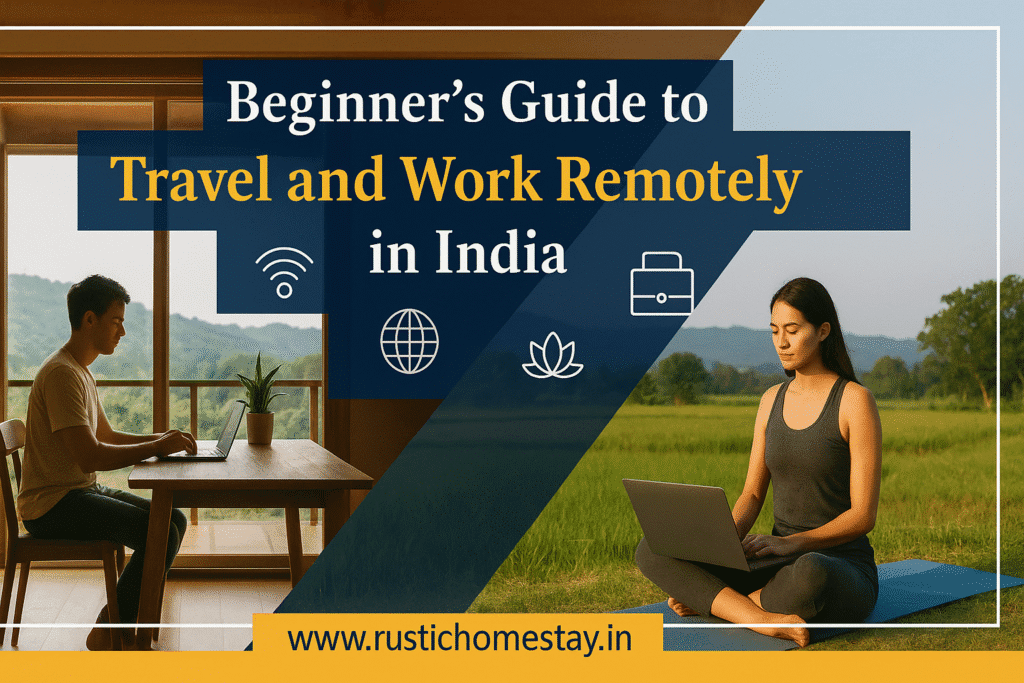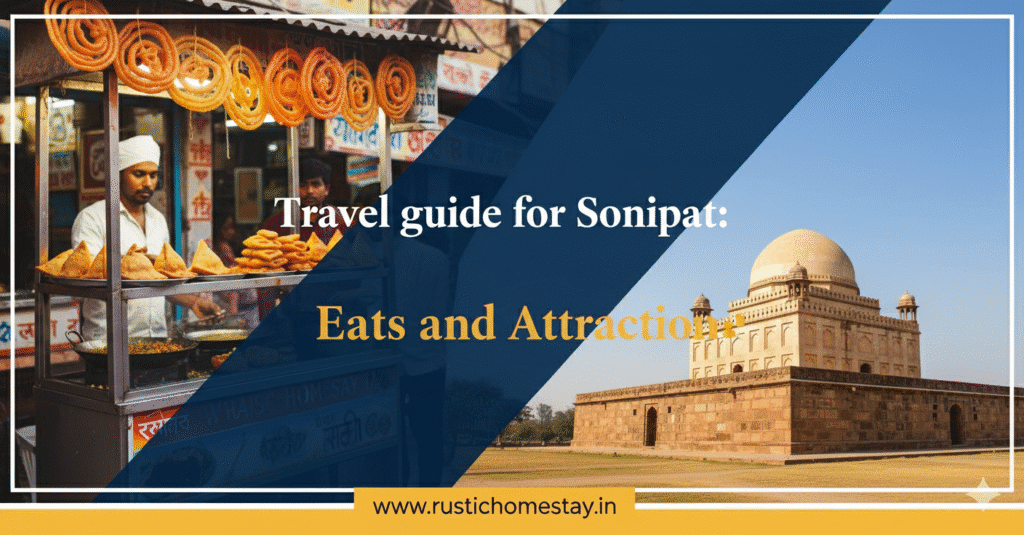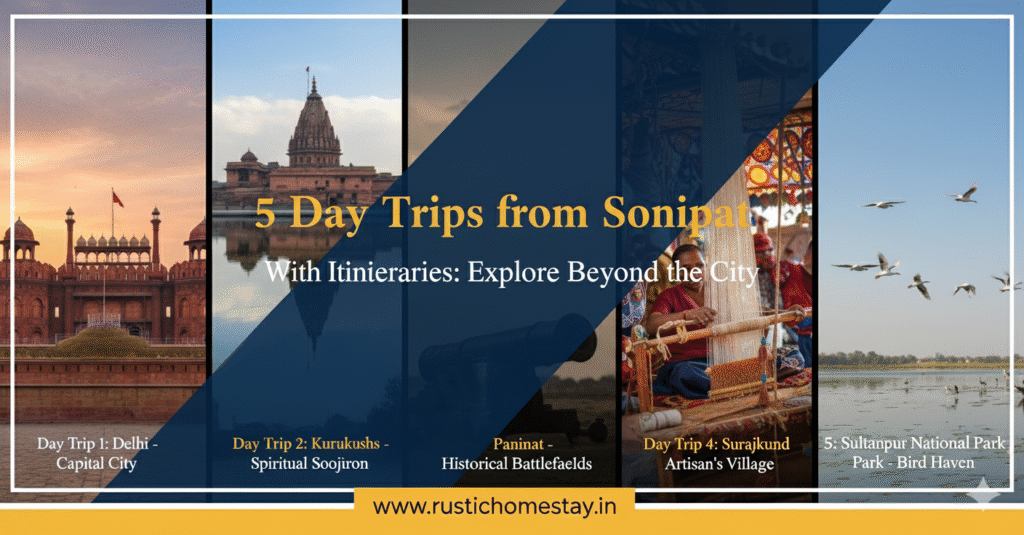The dream of trading your commute for a view of the Aravalli hills or a peaceful garden sanctuary is more achievable than ever. India, with its blend of culture, history, and surprisingly robust digital infrastructure, has quickly become a premier destination for the digital nomad.
However, working remotely while traveling in India comes with a unique set of challenges—from navigating visas and connectivity to balancing cultural immersion with professional demands.
This guide breaks down everything a beginner needs to know to successfully travel and work remotely in India, ensuring your adventure is productive, safe, and unforgettable.
Disclaimer: This is not legal or consular advise. This guide is just for information and you must always consult a nearby Consulate or Visa Center to clearly understand the requirements and Do’s and Dont’s when considering working remotely in India.
Table of Contents
TogglePhase 1: Pre-Departure Planning & Legalities
Your success begins long before you book your first flight. Addressing the necessary legal and logistical groundwork is essential.
1. Understanding Visa Requirements
Crucial Point: India does not currently offer a specific Digital Nomad Visa.
Most remote workers utilize one of the following:
e-Tourist Visa (e-TV) or Regular Tourist Visa: This is the most common and easiest to obtain. However, you cannot legally perform paid work for an Indian entity on this visa. You can, however, continue working remotely for your employer or clients outside of India. Stays are typically limited to 60 or 90 days per visit.
Business Visa (B-1): If your remote work involves frequent interaction, meetings, or consultation with Indian businesses, this may be an option, but it requires sponsorship and a clear business purpose. It is generally more complex than necessary for the average digital nomad.
Action Item: Always state your purpose of visit clearly and consult with your local Indian embassy if your work situation is ambiguous. Keep all employment and income source documentation proving your foreign income.
2. Health, Safety, and Insurance
Never compromise on coverage while traveling.
Travel Insurance: Although medical facilities are accessible for the most part, always purchase comprehensive travel insurance that includes:
Emergency medical coverage and evacuation.
Coverage for lost or stolen tech equipment (laptops, phones).
Trip cancellation/interruption benefits.
Vaccinations & Health: Consult a travel health specialist 4−6 weeks before your trip. Pack a basic medical kit, especially for gastrointestinal issues.
3. Financial Preparation: Cash, Cards, and Apps
India’s digital payment adoption is world-leading, but cash is still king in smaller towns.
UPI Apps (Unified Payments Interface): Apps like Google Pay and PhonePe are used everywhere—from roadside stalls to major retailers. Set these up with your Indian phone number upon arrival.
Currency: Carry a mix of cash (Indian Rupees) for transport and local markets. Use an international card with low or no foreign transaction fees for ATM withdrawals.
Phase 2: Mastering Connectivity and Gear
Reliable internet and the right gear are non-negotiable for successful remote work. This requires planning and redundancy.
4. Securing High-Speed Wi-Fi (The Nomad’s Litmus Test)
Connectivity is often the biggest source of stress for nomads. Don’t rely solely on public hotspots.
Primary Connection: Choose accommodations that explicitly guarantee fiber optic internet and provide a tested speed estimate (ideally 100 Mbps or higher). Question hosts about power backup for the router, as local power cuts are common. If you staying at any of the homestays of Rustic Homestays India, we guarantee high speed optic fiber 5G bandwidth round the clock.
Backup Connection (The SIM Card): Purchase a local SIM card (Airtel and Jio are dominant) immediately upon arrival. Get a plan with a generous data allowance (2 GB+ per day). Your phone’s hotspot should be your work-saving backup.
Mobile Hotspots: Carry a physical mobile hotspot device for true independence, especially for long train journeys or remote explorations.
5. Essential Tech Gear and Adapters
Keep your setup lean but functional.
Power Solutions: India uses Type C, D, and M plugs, with Type D (three round pins) being the most common for wall sockets. Pack a universal adapter and a power strip (surge protector) to charge multiple devices safely.
Ergonomics: For extended stays, consider a portable, foldable laptop stand, an external mouse, and a compact mechanical keyboard to maintain productivity and posture.
Security: Always use a Virtual Private Network (VPN) for sensitive work, especially on public or shared Wi-Fi networks.
Phase 3: Choosing the Right Accommodation
Accommodation in India ranges from bustling hostels to quiet, family-run homestays. The right choice dictates your productivity and well-being.
6. Homestay vs. Hotel vs. Co-living
The environment must match your work style.
Hotels: Offer consistency and privacy, but often lack authentic experience, kitchen access, and the communal feel. Wi-Fi quality is highly variable.
Co-living Spaces: Built for nomads, they offer community and dedicated workspaces, but can sometimes be loud and lack local immersion.
Family-Run Homestays (The Ideal Workation Base): Offer the best of both worlds. You get genuine hospitality, access to home-cooked meals (great for health), and a quieter, more stable environment for work. Look for features like dedicated work desks, reliable power backup, and communal kitchen access.
To see a perfect example of a homestay built for remote work, read: Beyond the Basics: Rustic Homestay Sonipat Amenities for Your Perfect Workation & Wellness.
7. Location and Environment
Choose your location based on your pace.
Tier 1 Cities (Bangalore, Mumbai): Offer high-speed connectivity and a large expat community, but come with intense traffic and high cost of living.
Tier 2/3 Cities and Getaways (Jaipur, Sonipat): Offer a better Work-Life Balance. Lower cost, less stress, closer access to nature/culture, and often quieter for focused work.
Phase 4: Integrating Work, Travel, and Wellness
The true skill of the nomad is finding balance and developing a sustainable digital nomad lifestyle.
8. Scheduling for Success
India runs on its own rhythm, which means early starts and late nights are common.
Time Zone Adjustment: If working for clients in the US or Europe, you will need to adjust your schedule. Schedule client calls for the late afternoon or evening to align with their morning. Use your mornings for deep, focused work, travel planning, or local exploration.
The Power of the Morning: Use the early hours for productivity (before the heat and noise peak) and wellness (yoga, quiet time).
9. Prioritizing Wellness and Community
Loneliness and burnout are common nomad challenges.
Food and Diet: Take advantage of communal kitchen access or local markets to maintain healthy eating habits. If you have dietary needs, a homestay where you can cook is non-negotiable.
Communal Spaces: Seek out accommodations with open communal spaces—rooftops, gardens, and shared lounges. These are essential for organic socialization and fitness.
See how a strong community environment is built: Family-run Homestay in India: Embracing Authentic Hospitality.
10. Embracing Slow Travel: Quality Over Quantity
The biggest mistake new digital nomads make is treating their trip like a two-week holiday—packing every hour with sightseeing and constant movement. Slow travel is the antidote to burnout and the key to deep cultural understanding.
Commit to Long Stays: Instead of bouncing between cities every few days, commit to staying in one location for at least two to four weeks. This gives you time to establish a routine, find your favorite coffee spot, and truly feel like a local.
The 5-to-2 Rule: Dedicate five days to focused work and local life, and two days to dedicated exploration (local day trips or deep dives into a specific neighborhood). This structured approach preserves energy.
Ditch the Tourist List: Stop chasing every item in the guide book. Instead, focus on immersive activities that require time, like learning a few phrases of the local language, attending a regional festival, or exploring a local market every morning.
Key Takeaways
Working remotely in India is a profound experience that enriches both your career and your life. The key is thorough preparation and choosing the right home base. By prioritizing reliable connectivity and accommodations that support your productivity and wellness goals, you ensure your adventure is a resounding success.
For a focused look at one of India’s best workation spots, check out: The ultimate Jaipur travel guide: From forts to horse farms.



